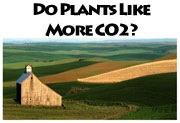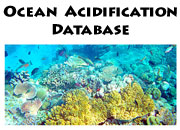When the atmosphere's CO2 concentration is experimentally increased, the vast majority of earth's plants lose less water to the atmosphere via transpiration while producing more biomass, the latter of which phenomena is generally more strongly expressed in woody perennial species than in annual herbaceous plants. Consequently, in concert with future increases in the air's CO2 concentration, earth's bushes, shrubs and trees will likely grow better and expand their ranges more than non-woody species will. Simultaneously, the increase in atmospheric CO2 content will make many plants of all types actually prefer warmer temperatures (Idso and Idso, 1994), which suggests that if air temperatures continue to rise in the future, that phenomenon will also spur both woody and non-woody plants to expand their ranges and grow more vigorously. In this summary, therefore, we review some of the evidence for this two-pronged phenomenon as it has operated in the past, focusing on what has been learned in North America.
We begin our review of the expanding literature on this topic in the northwestern corner of the United States, where Knapp and Soule (1998) report there was a dramatic increase in the range of western juniper trees over the last century. In particular, they note that the land area covered by these trees more than doubled over this time period, and that juvenile establishment rates at some locations had increased geometrically since the early 1960s. They also say that the rate of western juniper expansion appears to have been "unprecedented," and that it was the first time within the current interglacial epoch that such an expansion occurred under relatively dry conditions.
In studying this ongoing phenomenon, the two researchers revisited the Horse Ridge Research Natural Area - a protected site in central Oregon that has experienced minimal anthropogenic disturbance over the past several decades - to see what vegetation changes had occurred since a detailed cover assessment of the area was made in 1972. From archived aerial photographs of the site, as well as numerous ground-based measurements, they evaluated several of the same parameters measured in the earlier study. In addition, they investigated records of local climate, fire history and biotic influences in an effort to determine the likely cause or causes of the vegetation changes they documented. In doing so, they discovered that over the 23-year period between their study and the earlier assessment of the area, total tree cover increased by 59% and shrub cover by 7%, while the number of clumps of western juniper rose by 37% and the number of juniper stems by 53%.
After studying all available evidence, Knapp and Soule concluded that the expanding presence of western juniper at their study site "cannot be explained adequately by the traditional mechanisms commonly cited." In fact, the historical climate record of the area suggests, in their words, that conditions there "have not been favorable for an expansion of woody species this century." Consequently, the biological advantage conferred upon trees by the historical rise in the air's CO2 content was one of the few stimulatory forces they considered to be a viable explanation for their observations. Although they could not conclusively prove that rising levels of atmospheric CO2 were responsible for the growing importance of trees in this central Oregon nature preserve, their finding was an important piece of evidence in support of that hypothesis.
Expanding their work in this same general area, Soule and Knapp (1999) studied changes in the density and cover of western juniper trees on three sites of different land-use histories over the period 1951 to 1994, while evaluating a number of possible explanations for what they observed. This work revealed that the density of mature western juniper trees increased at all three sites over the period of study, as did absolute tree cover. However, none of the mechanisms traditionally offered as explanations for the post-1800 expansion of western juniper (domestic grazing, altered fire regimes, favorable climatic conditions) was deemed adequate to explain the observations. Thus compelled to consider the potential impacts of other influences, the researchers speculated that the historical rise in the air's CO2 concentration, with its growth-enhancing and water use efficiency-increasing properties, may well have been a contributing factor to the western juniper cover and density increases they observed.
Focusing more intently on ways to either prove or disprove the role of atmospheric CO2 enrichment in producing the results obtained in their first two studies, Knapp et al. (2001) developed tree-ring index chronologies from several hundred cores obtained from western juniper stands in four Research Natural Areas (RNAs) and one proposed RNA in central Oregon. They then picked the first third of the record (1896-1930, when the air's CO2 concentration rose from 295 to 306 ppm) and the last third of the record (1964-1998, when the air's CO2 concentration rose from 320-367 ppm) to compare the trees' ability to recover from drought in the two periods of different atmospheric CO2 concentration. They also determined, as important ancillary information, that there was no significant trend in winter/spring precipitation for the 1896-1998 period, nor for either the early or late period.
As a result of this research, the scientists found that juniper trees recovered better from the effects of drought in the 1964-1998 period, when the average CO2 concentration of the air was 343 ppm, than in the 1896-1930 period, when the average CO2 concentration of the air was 300 ppm, noting that "greater recovery following drought in the late period is consistent with the expected ameliorating influences of atmospheric CO2 under stressful conditions," which they attributed to a CO2-induced increase in tree water use efficiency in the late period and for which they cite much corroborative information. Hence, in reiterating that "the ability of western juniper to recover from drought during the 20th century has increased," Knapp et al. conclude that this phenomenon may be the driving force behind the observation that "western juniper has continued to expand its range during the 20th century."
In their most recent study to address this beneficent phenomenon, Soule and Knapp (2006) focused on ponderosa pine trees growing at eight different sties within the Pacific Northwest of the United States, in order to see how they may have responded to the increase in the atmosphere's CO2 concentration that occurred after 1950. The two researchers say they chose study sites that "fit several criteria designed to limit potential confounding influences associated with anthropogenic disturbance." In addition, they selected locations with "a variety of climatic and topoedaphic conditions, ranging from extremely water-limiting environments ... to areas where soil moisture should be a limiting factor for growth only during extreme drought years." Also, they say that all sites were located in areas "where ozone concentrations and nitrogen deposition are typically low."
At each of the eight sites that met all of these criteria, Soule and Knapp obtained core samples from about 40 mature trees that included "the potentially oldest trees on each site," so that their results would indicate, as they put it, "the response of mature, naturally occurring ponderosa pine trees that germinated before anthropogenically elevated CO2 levels, but where growth, particularly post-1950, has occurred under increasing and substantially higher atmospheric CO2 concentrations." Utilizing meteorological evaluations of the Palmer Drought Severity Index, they thus compared ponderosa pine radial growth rates during matched wet and dry years pre- and post-1950.
So what did they find? Overall, the two researchers report detecting a post-1950 radial growth enhancement that was "more pronounced during drought years compared with wet years, and the greatest response occurred at the most stressed site." As for the magnitude of the response, they determined that "the relative change in growth [was] upward at seven of our [eight] sites, ranging from 11 to 133%."
With respect to the significance of their observations, Soule and Knapp say that their results, "showing that radial growth has increased in the post-1950s period ... while climatic conditions have generally been unchanged, suggest that nonclimatic driving forces are operative." In addition, they say that "these radial growth responses are generally consistent with what has been shown in long-term open-top chamber (Idso and Kimball, 2001) and FACE studies (Ainsworth and Long, 2005)." Hence, they say "these findings suggest that elevated levels of atmospheric CO2 are acting as a driving force for increased radial growth of ponderosa pine, but that the overall influence of this effect may be enhanced, reduced or obviated by site-specific conditions."
Summarizing their findings, Soule and Knapp recount how they had "hypothesized that ponderosa pine ... would respond to gradual increases in atmospheric CO2 over the past 50 years, and that these effects would be most apparent during drought stress and on environmentally harsh sites," and in their very next sentence they say that the results they obtained "support these hypotheses." Hence, they conclude their paper by stating that "an atmospheric CO2-driven growth-enhancement effect exists for ponderosa pine growing under specific natural conditions within the interior Pacific Northwest."
Taken together, the results of the several studies of this insightful research team testify to the reality of some of the range expansions of earth's woody plants that have occurred over the past century or more - in this case, in parts of the U.S. Pacific Northwest - goodly portions of which have been driven by, and continue to be driven by, the historical-and-still-ongoing rise in the air's CO2 content.
References
Ainsworth, E.A. and Long, S.P. 2005. What have we learned from 15 years of free-air CO2 enrichment (FACE)? A meta-analytic review of the responses of photosynthesis, canopy properties and plant production to rising CO2. New Phytologist 165: 351-372.
Idso, K.E. and Idso, S.B. 1994. Plant responses to atmospheric CO2 enrichment in the face of environmental constraints: a review of the past 10 years' research. Agricultural and Forest Meteorology 69: 153-203.
Idso, S.B. and Kimball, B.A. 2001. CO2 enrichment of sour orange trees: 13 years and counting. Environmental and Experimental Botany 46: 147-153.
Knapp, P.A. and Soule, P.T. 1998. Recent Juniperus occidentalis (Western Juniper) expansion on a protected site in central Oregon. Global Change Biology 4: 347-357.
Knapp, P.A., Soule, P.T. and Grissino-Mayer, H.D. 2001. Post-drought growth responses of western juniper (Juniperus occidentalis var. occidentalis) in central Oregon. Geophysical Research Letters 28: 2657-2660.
Soule, P.T. and Knapp, P.A. 1999. Western juniper expansion on adjacent disturbed and near-relict sites. Journal of Range Management 52: 525-533.
Soule, P.T. and Knapp, P.A. 2006. Radial growth rate increases in naturally occurring ponderosa pine trees: a late-20th century CO2 fertilization effect? New Phytologist doi: 10.1111/j.1469-8137.2006.01746.x.
Last updated 18 April 2007



